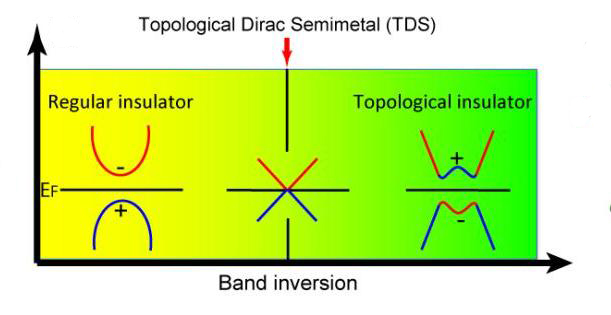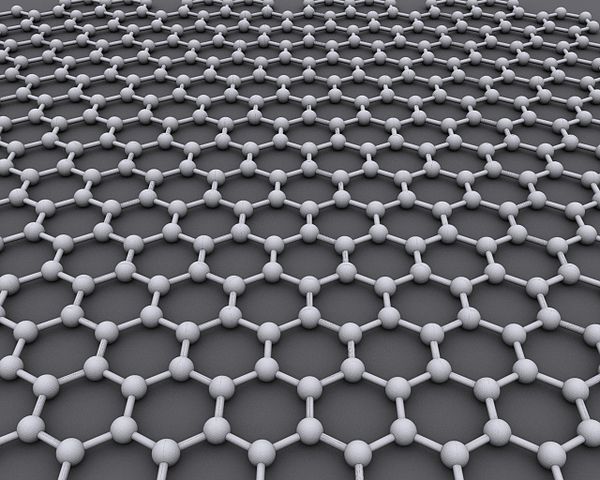3D counterpart to graphene discovered
Promises faster transistors and more compact hard drives
January 20, 2014

A
topological Dirac semi-metal state is realized at the critical point in
the phase transition from a normal insulator to a topological
insulator. The + and – signs denote the even and odd parity of the
energy bands. (Credit: Berkeley Lab)
“A 3DTDS is a natural three-dimensional counterpart to graphene with similar or even better electron mobility and velocity,” says Yulin Chen, a physicist with Berkeley Lab’s Advanced Light Source (ALS) when he initiated the study that led to this discovery, and now with the University of Oxford.
Graphene and topological insulators (such as those in 3DTDS) are both crystalline materials that are electrically insulating inside but conducting on the surface, allowing them to function as transistors and other electronic devices.*
[+]
While sodium bismuthate (Na3Bi) is too unstable to be used
in devices without proper packaging, it triggers the exploration for
the development of other 3DTDS materials more suitable for everyday
devices, a search that is already underway.
Graphene is an atomic-scale honeycomb lattice made of carbon atoms (credit: Wikimedia Commons)
Sodium bismuthate can also be used to demonstrate potential applications of 3DTDS systems, which offer distinct advantages over 2D (planar) graphene.
“A 3DTDS system could provide a significant improvement in efficiency in many applications over [2D] graphene because of its 3D volume,” Chen says. “Also, preparing large-size atomically thin single-domain graphene films is still a challenge. It could be easier to fabricate graphene-type devices for a wider range of applications from 3DTDS systems.”
In addition, Chen says, a 3DTDS system also opens the door to other novel physical properties that can be a boon for future electronic technologies. Future 3DTDS systems can also serve as an ideal platform for applications in spintronics.
The discovery was made at the Advanced Light Source (ALS), a DOE national user facility housed at Berkeley Lab.
This research was supported by the DOE Office of Science and by the National Science Foundation of China.
* Graphene and topological insulators both feature 2D Dirac fermions (fermions that aren’t their own antiparticle), which give rise to extraordinary and highly desirable physical properties.
Abstract of Science paper
Three-dimensional (3D) topological Dirac semimetals (TDSs) represent a novel state of quantum matter that can be viewed as “3D graphene”. In contrast to two-dimensional (2D) Dirac fermions in graphene or on the surface of 3D topological insulators, TDSs possess 3D Dirac fermions in the bulk. By investigating the electronic structure of Na3Bi with angle resolved photoemission spectroscopy, we discovered 3D Dirac fermions with linear dispersions along all momentum directions. Furthermore, we demonstrated the robustness of 3D Dirac fermions in Na3Bi against in situ surface doping. Our results establish Na3Bi as a model system of 3D TDSs, which can serve as an ideal platform for the systematic study of quantum phase transitions between rich topological quantum states.
(¯`*• Global Source and/or more resources at http://goo.gl/zvSV7 │ www.Future-Observatory.blogspot.com and on LinkeIn Group's "Becoming Aware of the Futures" at http://goo.gl/8qKBbK │ @SciCzar │ Point of Contact: www.linkedin.com/in/AndresAgostini
 Washington
Washington